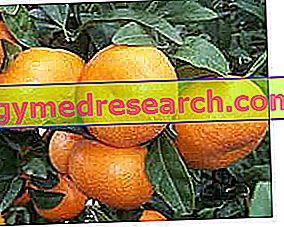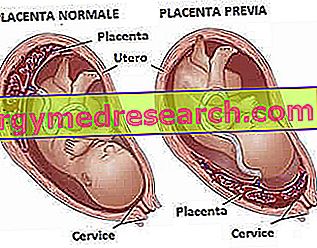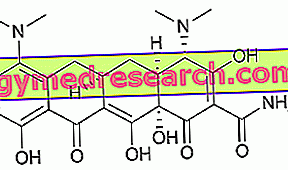Generality
" Mandarancio " is a generic term that identifies some hybrids of citrus fruits, obtained by crossing orange and mandarin (both species belonging to the genus Citrus - NB . Orange is also a cross!).

Worldwide, the term "mandarancio" is not univocally interpreted; discrepancies between the classifications and linguistic distortions in the translation still make the botanical distinction of this citrus fruit quite difficult, since Europe, America and Asia provide different data between them. Only a genetic cataloging of the plants can really distinguish the mandarin oranges from other citrus species, even if currently in the USA the mandarins are part of the mandarin group.
The most common varieties of mandaranci are: clementine (in Italy) and tangerine (in America), while the oldest mandarancio is undoubtedly the unshiu or satsuma .
According to statistics, mandarin orange is the most sold citrus after the orange itself; this is attributable to the relative organoleptic and gustatory characteristics that represent the fruit of the union between: the taste of the orange, the practicality to consumption of the mandarin (peel and segments) and the average dimensions comprised between the one and the other citrus. The presence or absence of the seeds in the mandarin oranges is determined by a specific botanical selection, but it is however an extremely weak characteristic, therefore easy to alter; it is sufficient that the mandarin orange plants are cross-pollinated with other trees of the genus Citrus to give rise to fruits with seeds. In this regard, in the USA many beekeepers have been the subject of quotations and complaints from seedless mandaran farmers, who - undergoing pollination by bees in the orchards - have totally lost this characteristic by devaluing the harvest.
Nutritional characteristics
The mandarancids are fruits belonging to the VII group of foods; you can eat fresh in season (whole or squeezed), benefiting from the very high vit content. C (ascorbic acid), or preserved in the form of jam, dehydrated fruit and candied fruit (they would be significantly impoverished). The mandarantins also contain significant amounts of water, potassium and viscous fiber, and there is no shortage of medium quantities of simple sugars (fructose). They are also rich in antioxidants and their consumption is considered (by the entire category of nutrition professionals) as one of the major preventive (long-term) actions of metabolic or neoplastic diseases.
It is however necessary to specify that the mandarancies are NOT all the same; on the basis of the specific crossing, they bring more or less calories, even though they are generally more similar to oranges than to mandarins. In the following table, 4 translations will be proposed, referring to 2 types of mandaranci (identified as "mandaranci [generic]" and "clementine"), oranges and mandarins.
Nutritional values
Nutritional composition of: Mandarancio, Clementina, Orange and Mandarin - Reference values of the INRAN Food Composition Tables
| Nutritional translation | clementines | Clementine | oranges | Mandarins | |
| Edible part | 87, 0g | 75, 0g | 80, 0g | 80, 0g | |
| water | 85, 3g | 87, 5g | 87, 2g | 81, 4g | |
| Protein | 0.8g | 0, 9g | 0.7g | 0, 9g | |
| Lipids TOT | 0.2g | 0.1g | 0.2g | 0.3g | |
| Saturated fatty acids | - g | - g | - g | - g | |
| Monounsaturated fatty acids | - g | - g | - g | - g | |
| Polyunsaturated fatty acids | - g | - g | - g | - g | |
| Cholesterol | 0, 0mg | 0, 0mg | 0, 0mg | 0, 0mg | |
| TOT Carbohydrates | 12, 8g | 8, 7g | 7, 8g | 17, 6g | |
| Starch | 0.0g | 0.0g | 0.0g | 0.0g | |
| Soluble sugars | 12, 8g | 8, 7g | 7, 8g | 17, 6g | |
| Dietary fiber | 2.2 g | 1.2g | 1.6g | 1, 7g | |
| Power | 53, 0kcal | 37, 0kcal | 34, 0kcal | 72, 0kcal | |
| Sodium | 2, 0mg | 4, 0mg | 3, 0mg | 1.0 mg | |
| Potassium | 160, 0mg | 130, 0mg | 200, 0mg | 210, 0mg | |
| Iron | 0.3mg | 0.1mg | 0.2mg | 0.3mg | |
| Football | 30, 0mg | 31, 0mg | 49, 0mg | 32, 0mg | |
| Phosphorus | 19, 0mg | 18, 0mg | 22, 0mg | 19, 0mg | |
| Thiamine | 0, 08mg | 0, 09mg | 0, 06mg | 0, 08mg | |
| Riboflavin | 0, 07mg | 0, 04mg | 0.05 mg | 0, 07mg | |
| Niacin | 0, 30mg | 0, 30mg | 0, 20mg | 0, 30mg | |
| Vitamin A | 25, 0mg | 12, 0mg | 71, 0mg | 18, 0mg | |
| C vitamin | 37, 0mg | 54, 0mg | 50, 0mg | 42, 0mg | |
| Vitamin E | - mg | - mg | - mg | - mg | |



